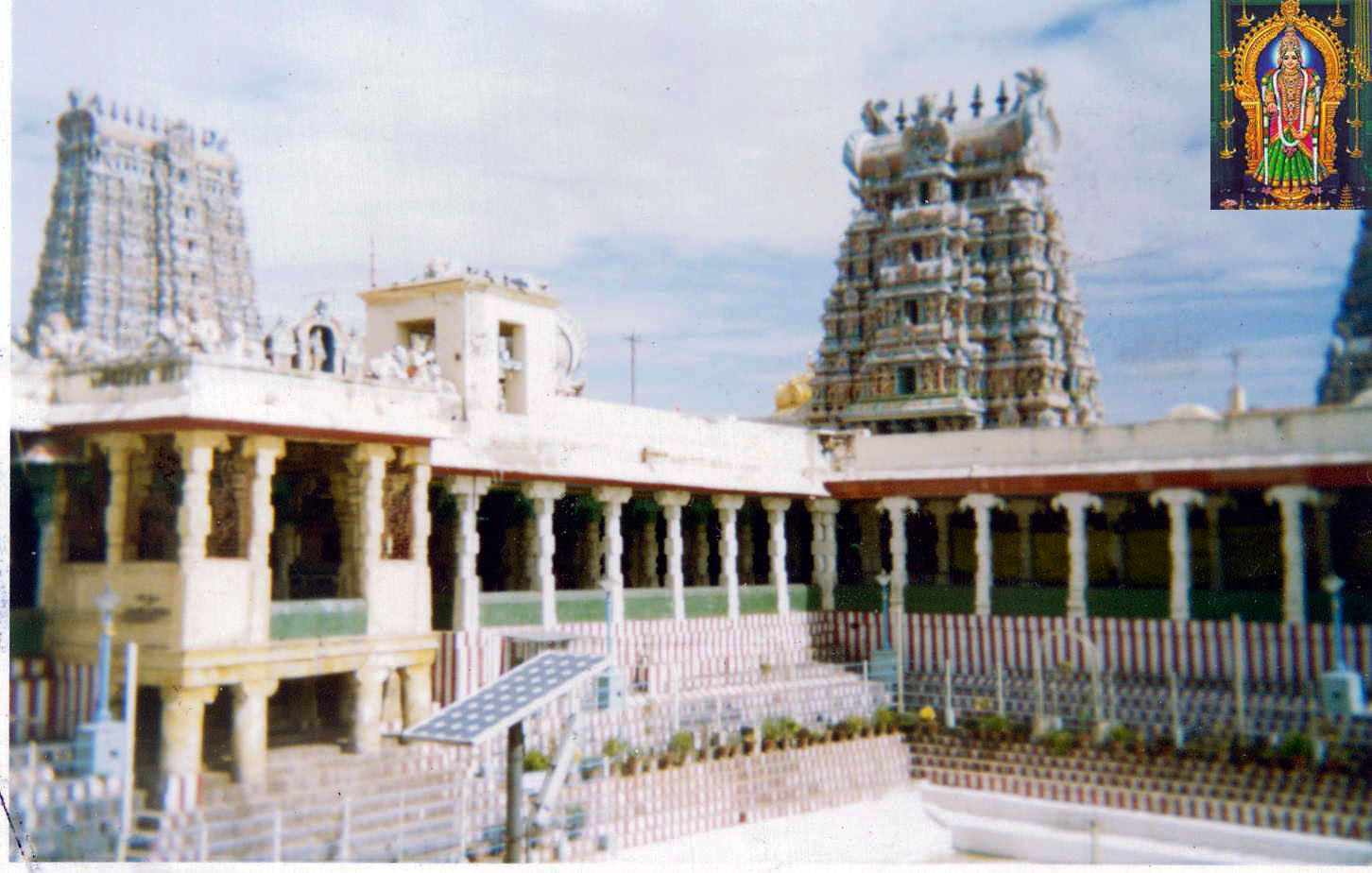Name of the Temple |
|
Location |
- It is situated in Kanyākumari district, Tamil Nadu.
|
| How to reach there? |
- By Air: The nearest airport is at Thiruvananthapuram (80 km). From there take the National Highway 66 south-east to reach Kanyākumari.
- By Train : Kanyākumari railway station is just 5 km away.
- By Road: Kanyākumari is connected through the National Highway 7 from Vārāṇasi to Kanyākumari.
|
Rulers/builders and Time Period
|
- Kanyākumari frame as a pilgrim center dates back to the purāic era.
- The foundation of the temple was laid by the Pāndyas. Later new additions were made by the Nāyaks. The sanctum sanctorum houses a very captivating idol of the goddess.
- The pūjās in this temple are carried out according to the Thanthrasamucchayam like the temples in Kerala. Kanyākumari temple is considered as a Kerala temple and was once part of the erstwhile Travancore kingdom.
- The Vaiśhakha festival is celebrated in the Tamil month of Vaikāsi (mid April – mid May) where an image of the goddess is taken around town in procession on various mounts.
- According to a legend, Bānāsura, the king of Demons, had obtained a boon from Lord Śhiva that he could be vanquished only by a virgin. Unable to bear the harassment of the Asura king, the Dhevas invoked Goddess Parāśhakthi to redeem them. Śhakti came here as a virgin girl and did penance on the shores. Lord Śhiva of Suchīndhram wished to marry the Goddess, and the wedding was fixed for an auspicious hour before dawn. Devarishi Nāradha, realizing that the marriage will spoil the end of Bānāsura, falsely heralded the break of dawn by assuming the form of a cock even as the wedding party was on its way to Kanyākumari. The Divine wedding did not take place as Śhiva returned to Suchīndhram disappointed. The Devi also resumed Her penance on the rock, now known as Śhrīpādhapārai, a few hundred meters offshore. Meanwhile, Bānāsura heard about the beauty of the girl and came to request Her hand in marriage. When Devi rejected the idea, the demon king decided to win her by force. This led to a fierce battle, in which the Goddess killed the demon. The relieved Dhevas returned blessed. The Śhrīpādhapārai is now known as Swami Vivekananda Rock, where the holy feet of the Goddess is enshrined.
|
Deity/Deities |
- Bhagavathi Amman, an incarnation of goddess Pārvathi.
- Goddess Bhagavathi is also known as Dhevi Kanyākumari and is a symbol of a Hindhu Nun. Her only desire is to keep chanting God's name. She is a model to the Hindhu Women.
|
Architecture Style
|
- Kanyākumari Amman Temple is not only famous for its architectural beauty but also for its picturesque location. It is located on the shore where the three oceans meet: the Indian Ocean, the Bay of Bengal and the Arabian Sea.
- To the southeast of the Kanyākumari Amman Temple lies two rocks rising out of the ocean. One of the rocks has footprints of the virgin goddess. Other one is the rock where Swāmi Vivekananda sat in meditation and attained enlightenment. Here the Vivekananda Rock Memorial was built in 1970.
- Sage Paraśhurāma is said to have installed the deity of Dhevi Bhagavathi on the shores here.
- A small gopuram on the northern entrance of the temple leads one to the sanctum. The beautiful image of the Goddess in resplendent glory, with a rosary in her right hand doing eternal penance, bestows on the devotee immense wealth of spiritual energy and peace of mind.
- Lord Ganeśha, Sūrya, Bāla Soundhari, the processional deity of the Goddess, and Lord Ayyappa have separate shrines oon the prakarams. A well inside the second prakaram, known as Mūla Ganga Thīrtham, Provides water for the Dhevi's abhiśhekam. The eastern entrance, facing the sea, remains closed throughout the year except for the Ārāttu rituals.
- The architecture style of the temple is same as that of Padmanābha temple. The kund or lake in front of temple also indicates the possibility of tunnel network to the sea. There are also underground tunnels just beneath the temple last references of opening are about 179 years ago. But this seems to be a myth. Nobody ever opened the underground tunnel thereafter.
|
Other Special Features
|
- One specialty of the idol is her diamond nose ring. The sparkling diamond nose-ring of the deity is said to be visible even from the sea.
- The temple's legend says that the nose ring was obtained from a king cobra and that light reflects off it so brightly that once an ancient mariner mistook it for a lighthouse. Sailing his ship towards the beacon, he wrecked upon the Kanya Kumari rocks. In order to prevent such a tragedy from happening again, the eastern door of the temple is only opened on five special occasions throughout the year.
- The nose-ring of the goddess shines brilliantly as if enveloped with some divine power.
|
Any Other/Remarks
|
- For thousands of years, this southern-most tip of the sub-continent has been one of India's main pilgrimage sites, as bathing in Kanyākumari's waters is said to absolve one of all sins. The tradition here is to take a holy dip at the bathing ghhāṭ at the confluence of the three seas. There are about 25 Thīrthhams on the shores. This is also one among the 108 Śhakthi Pīṭhas in the world.
- An image of the deity is held in worship at the Navarāthri manḍapam throughout the duration of Navarāthri, and processions mark the festive celebrations on each of the nine nights. The destruction of Bāṇāsura is enacted on Vijaya Daśhami, the concluding day of the Navarāthri festival, where an image of the deity is taken in procession on a horse mount to a nearby village - Mahadhānapuram.
|
Special Reference to Performing Arts:
|
- The worship of Dhevi Kanyākumari dates back to the Vedhic times. She has been mentioned in the Nārāyana Upanishad (belonging to the Taitthirīya Āranyaka ) of Yajur Vedha . Here there is a hymn in the form of a Gāyathri addressed to the Divine Energy. The Slogan is, “"Kāthyāyanaya vidhmahe; Kanyakumārim dhīmahi Than no Dhurgih prachodhayāth".
- The Kanyākumari temple has been mentioned in the Rāmāyana, Mahābhāratha, and the Sangam works Manimekalai and Puranānūru.
- The author of Periplus of the Erythraean Sea (60-80 A.D.) has written about the prevalence of the propitiation of the deity Kanyākumari.
|
Bibliography |
|















